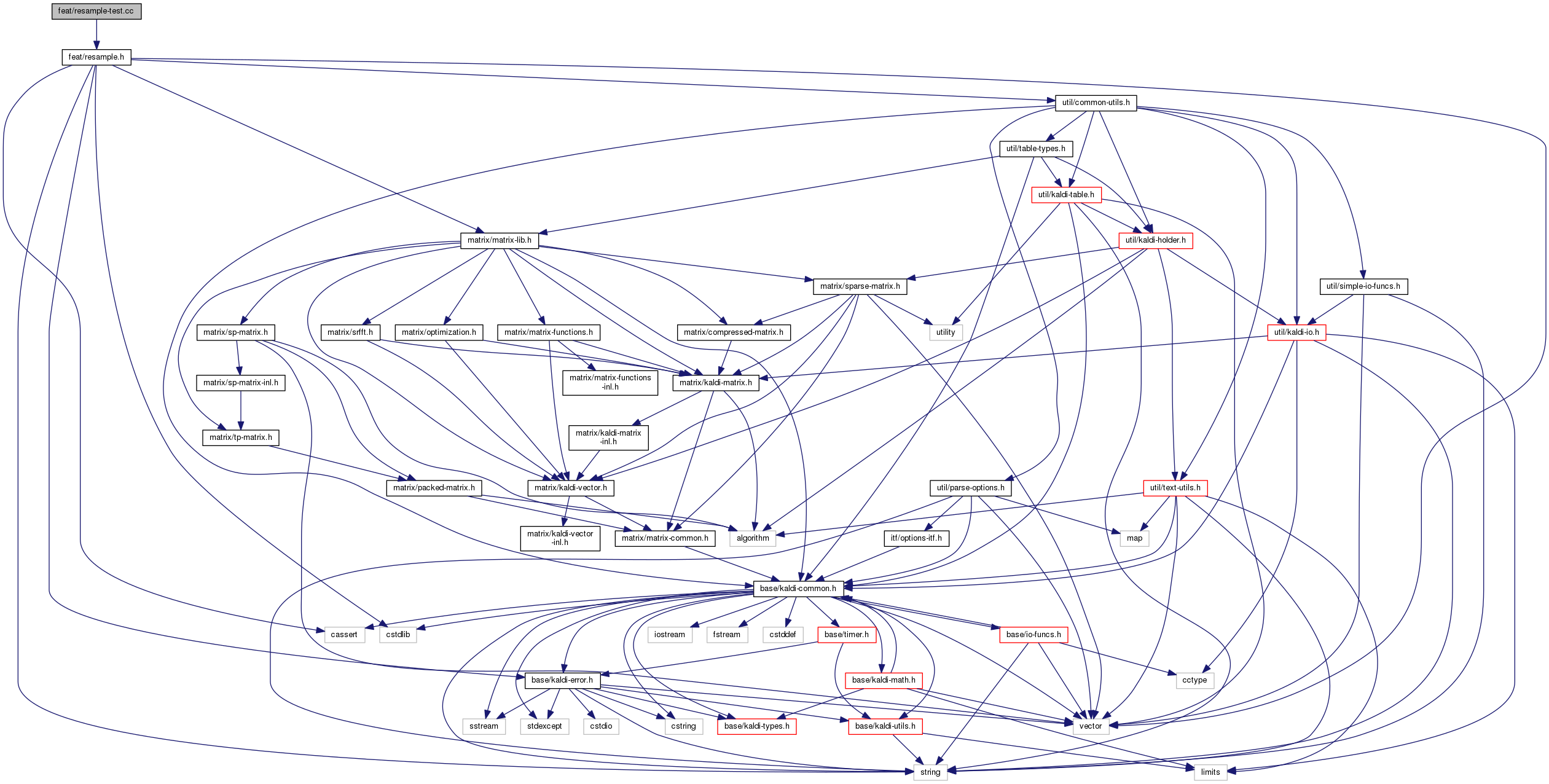#include "feat/resample.h"
Go to the source code of this file.
Classes | |
| class | TestFunction |
Functions | |
| void | UnitTestArbitraryResample () |
| void | UnitTestLinearResample () |
| void | UnitTestLinearResample2 () |
| int | main () |
| int main | ( | ) |
Definition at line 278 of file resample-test.cc.
References KALDI_ERR, KALDI_LOG, UnitTestArbitraryResample(), UnitTestLinearResample(), and UnitTestLinearResample2().
| void UnitTestArbitraryResample | ( | ) |
Definition at line 47 of file resample-test.cc.
References rnnlm::i, KALDI_ASSERT, KALDI_VLOG, kaldi::RandUniform(), ArbitraryResample::Resample(), and MatrixBase< Real >::Row().
Referenced by main().
| void UnitTestLinearResample | ( | ) |
Definition at line 147 of file resample-test.cc.
References kaldi::ApproxEqual(), VectorBase< Real >::Dim(), rnnlm::i, KALDI_ERR, KALDI_LOG, KALDI_VLOG, kaldi::kCopyData, kaldi::RandUniform(), VectorBase< Real >::Range(), ArbitraryResample::Resample(), LinearResample::Resample(), Vector< Real >::Resize(), MatrixBase< Real >::Row(), and VectorBase< Real >::SetRandn().
Referenced by main().
| void UnitTestLinearResample2 | ( | ) |
Definition at line 229 of file resample-test.cc.
References kaldi::AssertEqual(), VectorBase< Real >::Dim(), KALDI_LOG, LinearResample::Resample(), VectorBase< Real >::SetRandn(), and kaldi::VecVec().
Referenced by main().